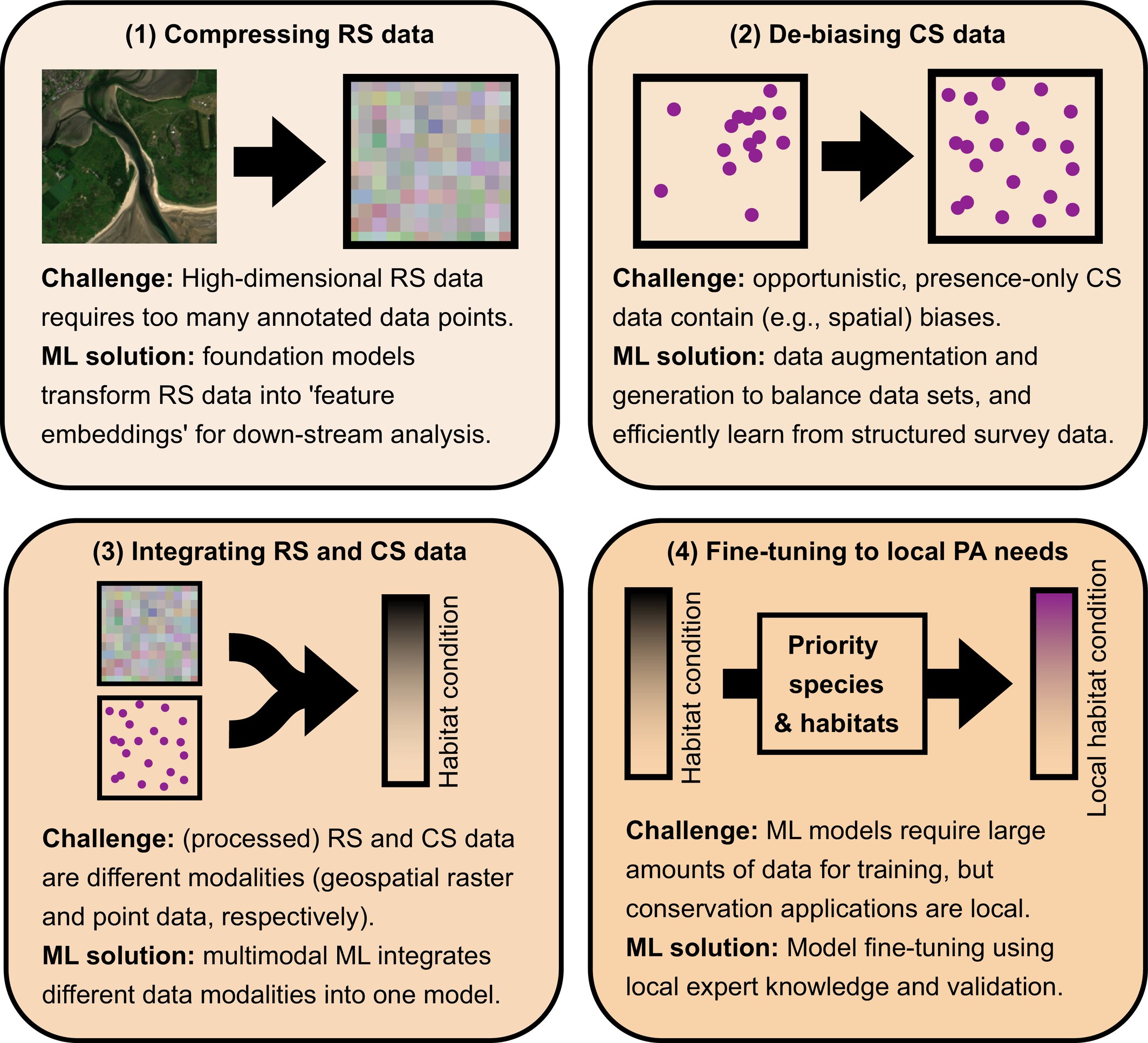Research interests
My research centers on developing advanced machine learning techniques to solve urgent open challenges in biology and ecology. Currently, my work focuses on biodiversity monitoring through the analysis of remote sensing data (satellite imagery, aerial photography), citizen-science wildlife observations and geospatial datasets. In 2025 we published a perspective article detailing how machine learning can dramatically scale up protected area monitoring using these data sources. Within AI, I have a strong interest in methods that extract efficient features from high-dimensional data and simultaneously minimise data requirements, such as self-supervised, weakly supervised and unsupervised learning. Our brains are phenomenal in doing so – we take in a constant stream of sensory information and rarely get explicit feedback – and therefore continue to inspire me.
I’m also passionate about reproducible code, promoting open-access science, and contributing to open-source software. If this interests you, I have written a Python tutorial on reproducible figure making for scientists.

Figure from Van der Plas et al., 2025, Ecol. Sol. Evid.